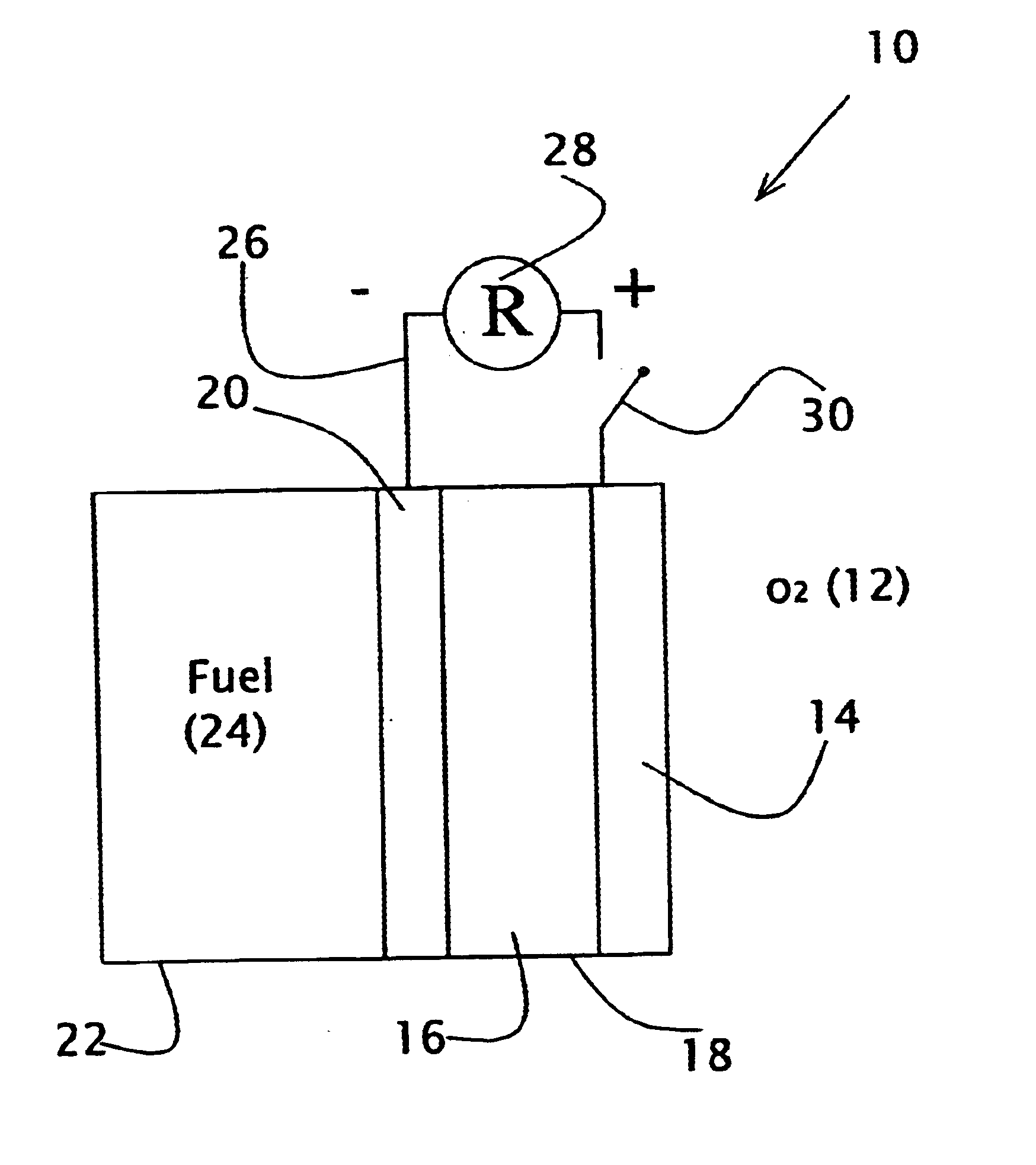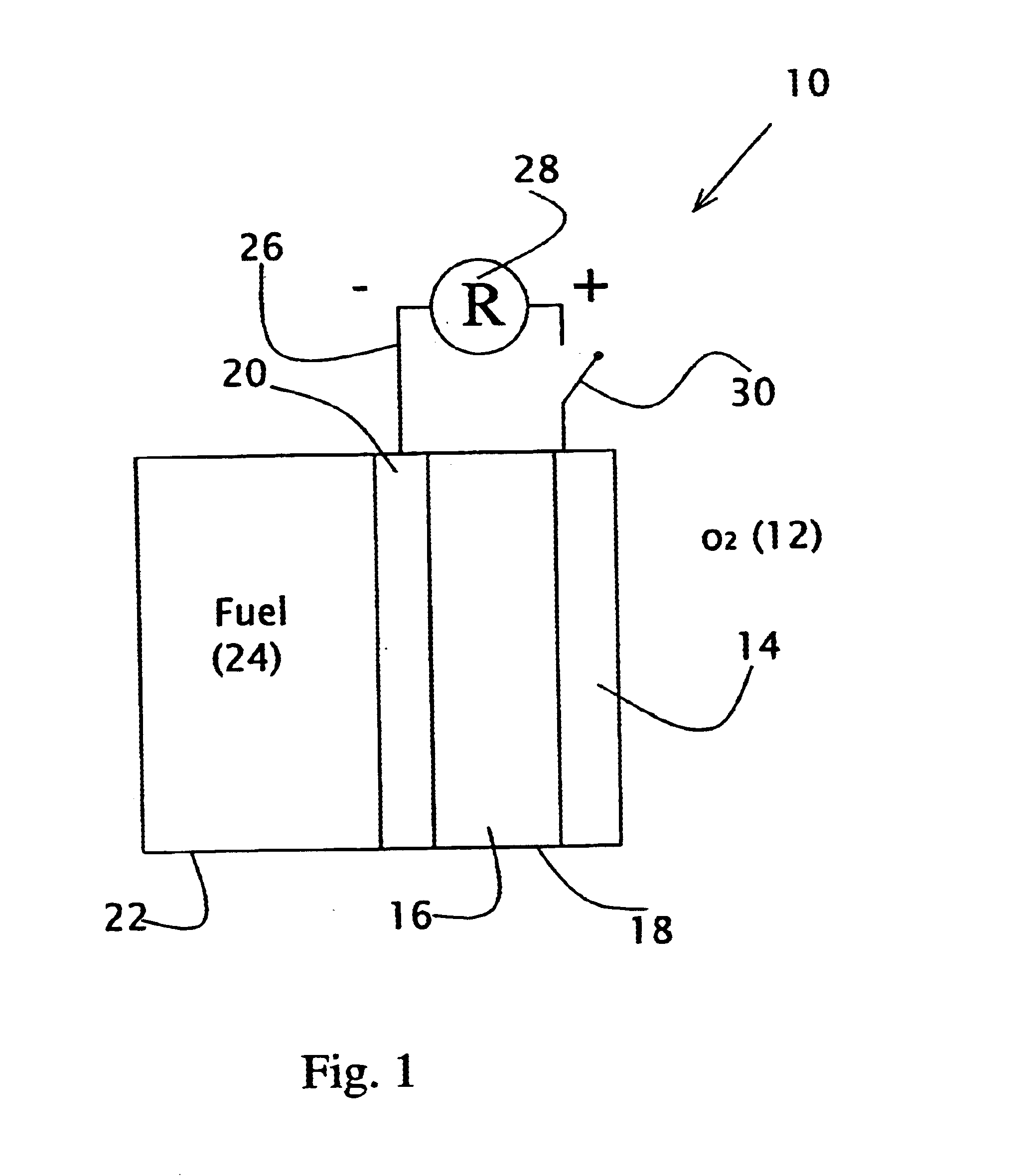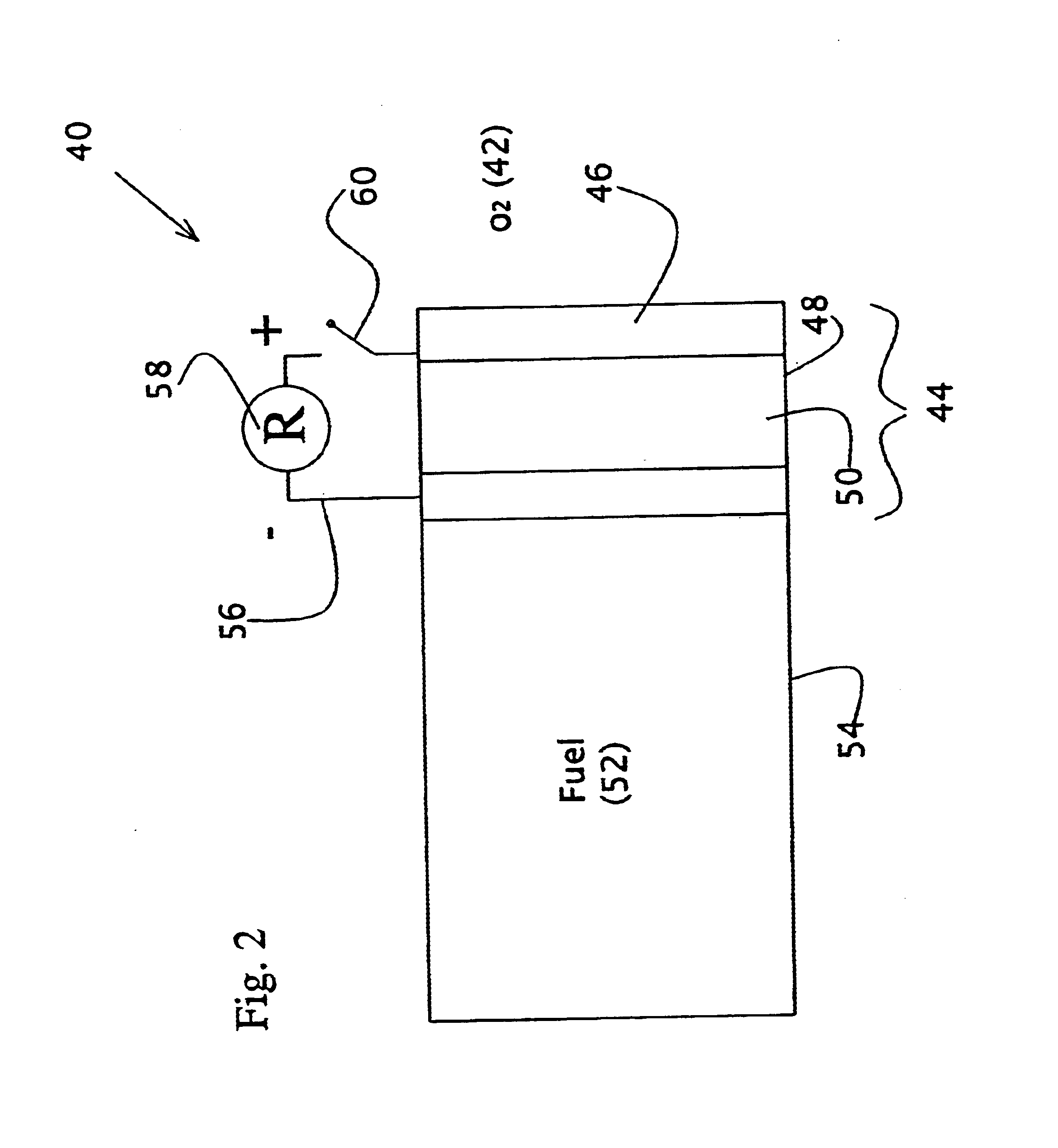Liquid fuel compositions for electrochemical fuel cells
a fuel cell and liquid fuel technology, applied in the direction of fuel cells, liquid carbonaceous fuels, electrochemical generators, etc., can solve the problems of inability to achieve simple methods, inability to prevent the widespread use of fuel cells in many applications, and inability to meet the requirements of hydrogen-powered fuel cells
- Summary
- Abstract
- Description
- Claims
- Application Information
AI Technical Summary
Benefits of technology
Problems solved by technology
Method used
Image
Examples
example 2
The current at U=0.5 V was measured as a function of time in a fuel cell as in Example 1, wherein to the methanol / KOH solution 5 weight percent NaBH.sub.4 was added. A current of 240.+-.5 mA was measured over 90 minutes. The graph of the measured current as a function is time is presented in FIG. 3a.
While the invention has been described in respect to a limited number of embodiments, is will be appreciated that many variations, modifications and other applications of the invention may be made.
PUM
| Property | Measurement | Unit |
|---|---|---|
| reduction potential | aaaaa | aaaaa |
| area | aaaaa | aaaaa |
| surface-active | aaaaa | aaaaa |
Abstract
Description
Claims
Application Information
 Login to View More
Login to View More - R&D
- Intellectual Property
- Life Sciences
- Materials
- Tech Scout
- Unparalleled Data Quality
- Higher Quality Content
- 60% Fewer Hallucinations
Browse by: Latest US Patents, China's latest patents, Technical Efficacy Thesaurus, Application Domain, Technology Topic, Popular Technical Reports.
© 2025 PatSnap. All rights reserved.Legal|Privacy policy|Modern Slavery Act Transparency Statement|Sitemap|About US| Contact US: help@patsnap.com



